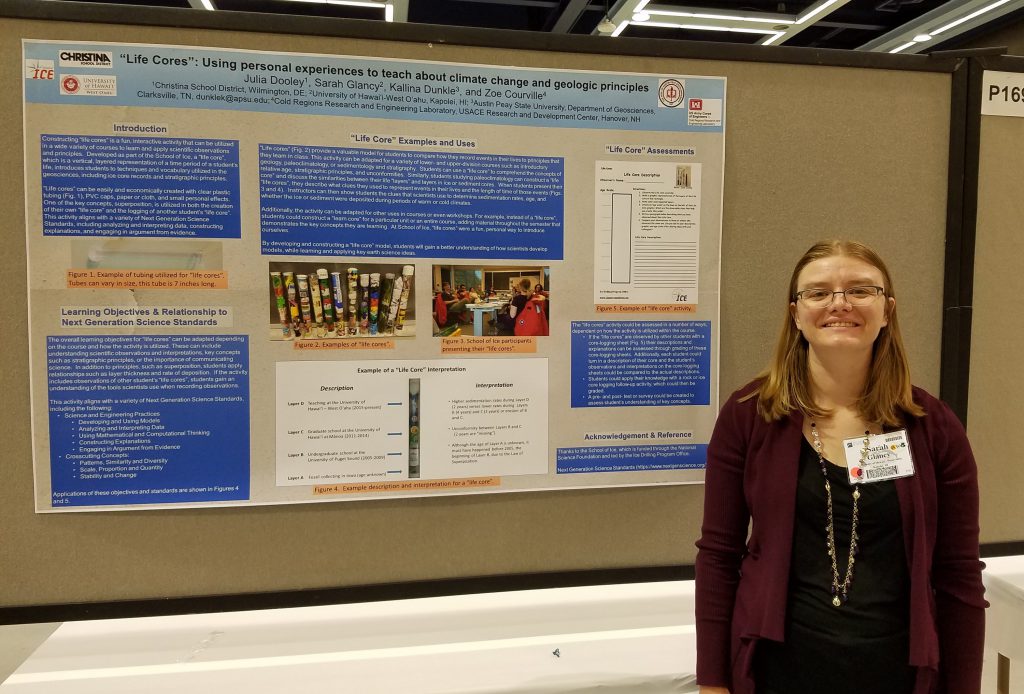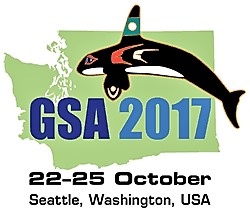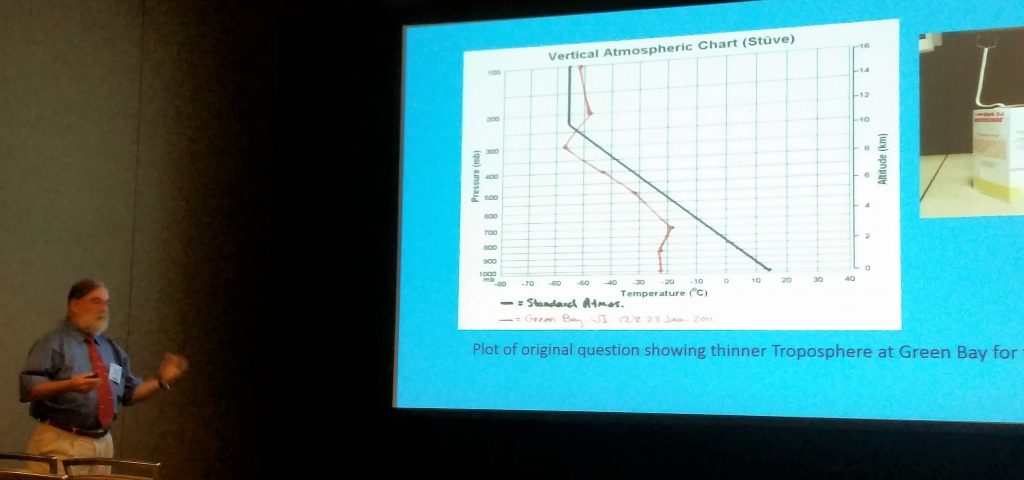
Sarah Glancy and her poster presentation
The University of Hawaiʻi-West Oʻahu was well represented at the Geological Society of America’s Annual Meeting & Exposition in Seattle late last month as two members of UHWO’s Natural Science faculty presented papers at the conference.
Sarah Glancy, a Geology lecturer, presented a paper and a poster at the event held in Seattle Oct. 22 to 25. Associate Professor Richard Jones presented a paper during the meeting’s oral technical sessions and served as an advocate for a technical session.

The annual Geological Society of America meeting attracts thousands of geological professionals from the U.S. and other countries to discuss earth science from academic, government, business, and industrial perspectives. The Geological Society of America, founded in 1888, is a scientific society with more than 25,000 members from academia, government, and industry in more than 100 countries.
Glancy presented a paper titled The Importance of Professional Development Opportunities for Adjunct Instructors, that noted adjunct professors can benefit from professional development activities, including mentoring. Glancy has taught GEOL 101 Dynamic Earth and 101L laboratory as well as GEOL 130 Geological Hazards for the past three years at UH West Oʻahu. She recently completed the National Science Foundation-funded School of Ice professional development programs for educators.
Glancy also presented her poster, Life Cores: Using personal experiences to teach about climate change and geologic principles, which helps introduce students to techniques and vocabulary used in geosciences, including ice core records and stratigraphic principles.

Prof. Rick Jones presenting at the GSA conference
Jones presented a paper titled But Can I use this on Monday morning? Adapting Professional Development Curriculum in Atmospheric Science for Immediate Use in the Classroom, which discussed applying knowledge gleaned from a two-week long workshop on weather and climate to his introductory Atmospheric Science and Climate Science courses, and the importance of using local data to engage students.
Jones also served as an advocate for a technical session, being responsible for organizing and facilitating Translating Professional Development Experiences into the Classroom all day on Wednesday, October 25.
